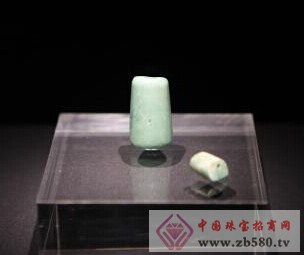“Yu Run Dongfang – Dawenkou – Longshan· Liangzhu Jade Culture Exhibition†was held in the Shandong Provincial Museum on the 9th. More than 300 prehistoric jade articles representing the Haishu area and Liangzhu culture were first exhibited in Shandong. This is the exhibition that China has exhibited the largest number of Dawenkou-Longshan culture and Liangzhu culture jade. The representative part of the Dawenkou-Longshan culture jade is the first concentrated display after the excavation of the prehistoric jade in Shandong. Seen at the scene, the exhibition is marked by the “Yu Yu†common in the Dawenkou-Longshan culture of the Neolithic Age. The exhibition covers a variety of jade categories including jade, jade, jade, jade, jade, and jade. . Taking the development of jade culture as a clue, the exhibition is divided into five parts: the spirit of heaven and earth, the life of the east, the jade, the stone of the mountain, the unsolved mystery, from the ancient sacrificial role, the function of life, to the The use of jade culture in detail in the use of funeral ceremonies. Zhu Naicheng, director of the Information Center of the Institute of Archaeology of the Chinese Academy of Social Sciences, commented that the Chinese jade culture has a long history and the prehistoric jade culture in Shandong Province has the characteristics of inheriting the past and the future. It has the characteristics of blending North and South. Zhu Naicheng said: "For more than 60 years since the founding of the People's Republic of China, a large number of prehistoric jade articles have been discovered in Shandong. This is a concentrated expression of the splendid culture of the Haitang area 4,000 years ago, and it is also an extremely important material for exploring the origin of civilization." For the first time, the Shandong Museum cooperated with the Liangzhu Museum in Zhejiang Province to present the Dawenkou-Longshan culture and the Liangzhu culture jade on the Chinese land four thousand years ago. Zhu Naicheng believes that the comparison between the prehistoric jade culture in Shandong and the Liangzhu jade culture in the Taihu area shows the face and characteristics of prehistoric jade culture in eastern China. It is of great significance and is conducive to exploring various mysteries of academic unsolved. Guo Sike, director of the Shandong Provincial Museum, said that the origin and development of jade articles is a very important element in early Chinese civilization. In the archaeological finds of prehistoric times in China, the Shandong region in the lower Yellow River and the Taihu Lake region in the lower reaches of the Yangtze River are the most developed areas of jade culture. The jade cultures of the two regions have their own characteristics and influence each other. The joint exhibition is conducive to a comprehensive display of the social development and changes in the Neolithic Age, especially the development of prehistoric jade and jade culture. Jade, as the king of the stone, has been a cult of worship by the ancestors since ancient times. Today is a precious gem that is widely recognized by the public. The jade ornaments exhibited this time are different and exquisite, and are popular with the public. It is understood that the exhibition is jointly sponsored by the Shandong Provincial Department of Culture, the Shandong Provincial Cultural Relics Bureau, and the Shandong Provincial Cultural Relics Protection and Collection Association. It is one of the phased achievements of the Dongyi Cultural Traceability Project in Shandong Province, with a three-month extension. During the period, there were various unsolved mysteries that invited the public to answer them together, and continued to introduce special lectures with the theme of “Jadeâ€. Fleece Fabric,100T Polar Fleeces,Minky Stripes Fabrics,Hacci Fleece Fabrics shaoxing zida import&export co.,ltd. , https://www.zida-fabric.com